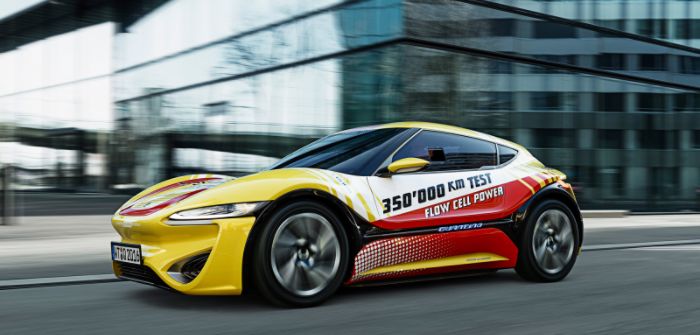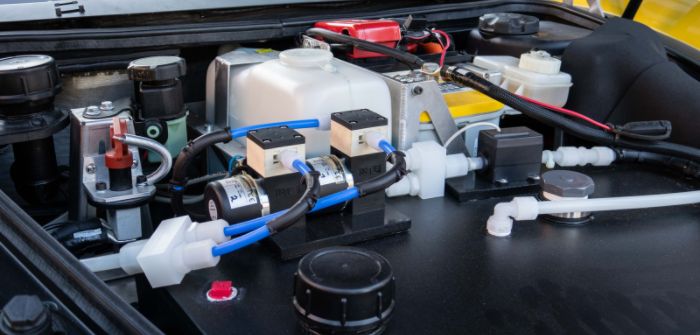Since it was homologated for road use in 2016, the Quantino 48Volt has covered more than 200,000km (124,000 miles) on the road and 150,000km (93,200 miles) on a testbed.
During its 350,000km (217,500 miles) of road testing, the prototype low-voltage EV, which features a nanoFlowcell drive, required the regular replacement of consumable parts such as brakes and tires, as well as a wide assortment of minor repairs. However, its powertrain ran without problems for the entire duration of the test.
The flowcell installed in the vehicle did not cause a single error alert. Despite the more than 10,000 running hours, neither the membrane nor the two electric pumps showed signs of wear.
The nanoFlowcell system ran virtually maintenance free. Occasional updates to the intelligent control software for the energy management in the Quantino 48Volt were uploaded, but only to improve system efficiency.
One result of this, for example, is more efficient consumption regulation of the bi-Ion electrolyte. Over the test period so far, the Quantino 48Volt has returned an average consumption of just 8-10kW/100km (62 miles).
The endurance test demonstrated that the nanoFlowcell technology is particularly well-suited to electric vehicles – for instance, the entire nanoFlowcell system operates at low voltages, thus dispensing with expensive and heavy high-voltage components of the kind used in conventional electric vehicles.
“Endurance testing of the Quantino 48Volt has confirmed our assumptions. The real-life operation of the nanoFlowcell was almost entirely in line with our calculations,” said Nunzio La Vecchia, developer of the nanoFlowcell technology and CEO of nanoFlowcell Holdings.
nanoFlowcell Holdings is currently working on solutions for series-production of the nanoFlowcell membrane as well as mass production of the bi-Ion electrolyte liquids. The company will issue a status update on the projects in the course of 2019.



